-
Escapes. William Hogarth and the Consequences II: Sign painting
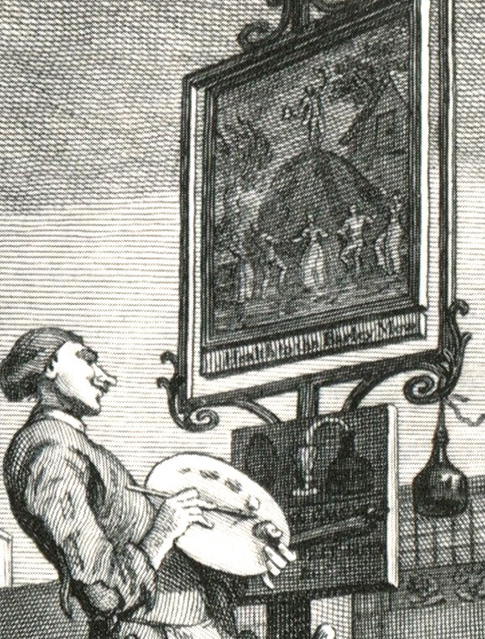
2. Schildermalerei Der hervorragendste Interpret dieser demokratischen Emblematik war der Herausgeber von Ainsworths Jack Sheppard–Roman, der ausgebildete Parlamentsstenograph und Gerichtsreporter Charles Dickens.[29] Dickens hatte eine ähnliche Sozialisation wie Hogarth erfahren, mit einem Vater, der als Schuldner inhaftiert war, dem entsprechenden sozialen Abstieg und der Notwendigkeit, früh zum Unterhalt der Familie beizutragen. Die große Schnittmenge zwischen […]
-
“Magnificent bite” or “Damn punch in the face” ? ———- Abdul Jossot hits Charlie Hebdo …. and the FAZ misses.
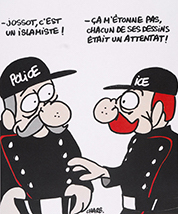
Not translated: Das Charlie Hebdo-Massaker hat viele Kommentatoren der internationalen Feuilletons in die Bredouille gebracht. Wie sollte man auf die Schnelle dieses offenbar speziell französische Phänomen eines auf äußerte Konfrontation gerichteten politischen Cartooning erklären, zu deren Drastik sich die übrigen nationalen Karikaturschulen offenbar wie Messdiener zu einer Bande bekiffter Hells Angels verhalten? Wie Licht in […]
-
Think about Horthy! The interventionist art of Mihály Biró
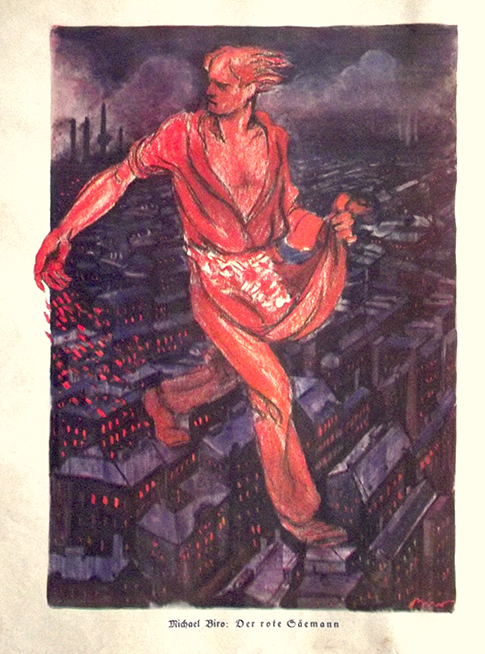
The Melton Prior Institute is represented in the exhibition “Turning Points. The Twentieth Century through 1914, 1939, 1989 and 2004 ” at the Hungarian National Gallery Budapest with an extensive installation. The arrangement “Gondolj Horthyra / Think about Horthy” which opens up this display of contemporary artworks reflecting the complex history of the 20th century […]
-
ROSTA / GPP : Pictorial Newsposter-Series of the Russian Avantgarde III , Moscow, 1921
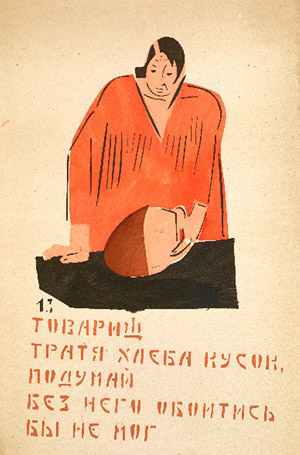
The campaign at ROSTA ended at the beginning of 1921 with the departure of the director of the news agency Platon Kerzhentsev. Afterwards, it was continued for one more year with a stricter conception in didactical terms under the patronage of Glavpolitprosvet (GPP), a newly founded educational institution of the Ministry of Cultural Affairs. The […]
-
ROSTA / GPP : Pictorial Newsposter-Series of the Russian Avantgarde I , Moscow, 1920 / 1921
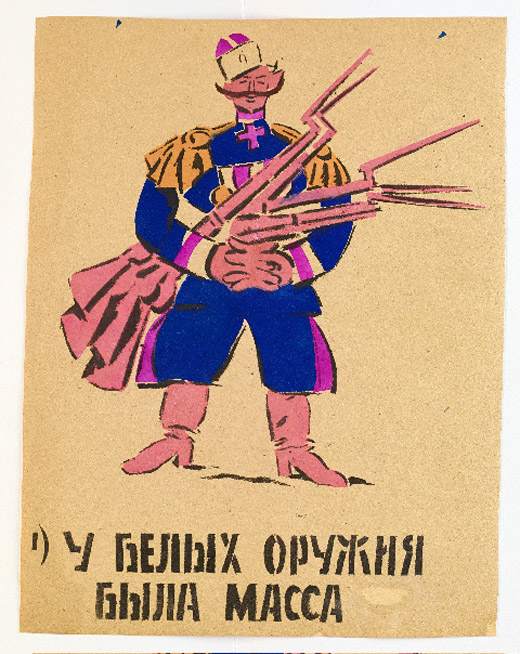
In February 1919, caricaturist Mikhail Cheremnykh started an artistic campaign in an empty shop window with a visually designed report of the Bolshevist news agency ROSTA. Shortely thereafter the initiative was taken up by the popular poet Vladimir Mayakovsky. He selected most of the news items and prepared them for pictorial realisation. “The field of […]
-
Graphic Journalism and the Avant-garde – The ROSTA Windows of the Bolshevik Art Army.
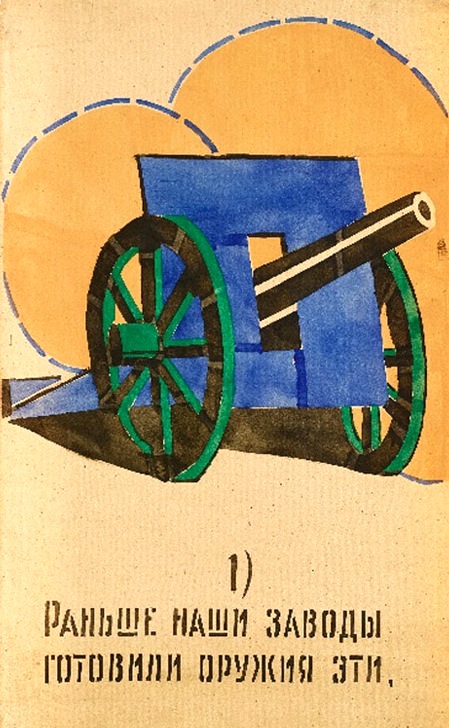
In a situation in which museums, put under pressure by the market, are increasingly withdrawing from their core business of basic historical research on the state of present-day art, it can happen that precisely in this regard they are overtaken by extraordinary initiatives of the market itself, by galleries, for instance, which are now taking […]
-
Drawing Protest, 1525 – 1970. How protest was visualized through the centuries. A commented picture spread
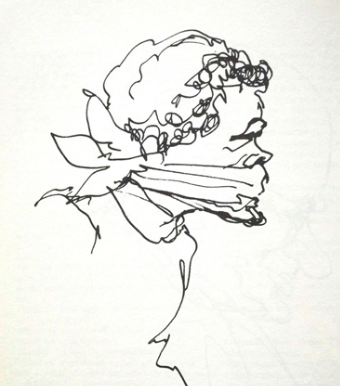
A picture spread with material from the archive of the Melton Prior Institute, Düsseldorf, in cooperation with the exhibition “Im Zeichen des Protests / Drawing Protest”, Galerie für Zeitgenössische Kunst Leipzig, 19.10.2013 – 09.01.2014, curated by Olga Vostretsova 01) Barthel Beham, “Der Welt Lauf” (The course of the world), copper engraving, Nuremberg 1525 The artist […]
-
Portraying Protest
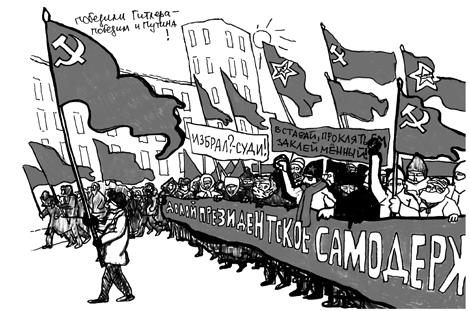
Beginning with elections to the Russian State Duma, in December 2011, and ending with the third so-called March of the Millions, in September 2012, I kept a graphical Chronicle of Resistance, meaning that I sketched all the major opposition rallies and protest events in Moscow. —————————————————————————— Excerpts of Victoria Lomasko´s Chronicle of Resistance: December 10, […]
-
Evil Empires II: British Images , 48 political drawings, Berlin 1943

The works of Thuringian graphic artist A. Paul Weber were strongly influenced by the visionary imaginations of Alfred Kubin. In his main work, the graphic cycle “British images”, published in 1941, influences from Gustave Doré´s “London Pilgrimage” can be traced, as well as of those of other French illustrators such as Théophile Steinlen, Charles Léandre […]
-
Remember Korea / Gondolj Koreara (1952), Budapest, 1952
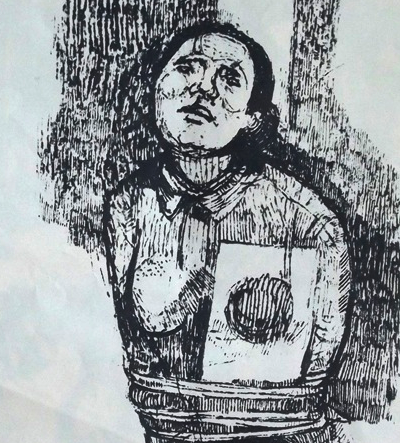
-The key issue of the graphic portfolio created by the Hungarian artist Bencze László is the massacre near Sichon, North Korea, in the autumn and winter of 1950 with more than thirty thousand victims, mainly civilians. From the Communist side, these war atrocities were attributed to the American invading forces. Like Picasso’s famous painting Massacre […]